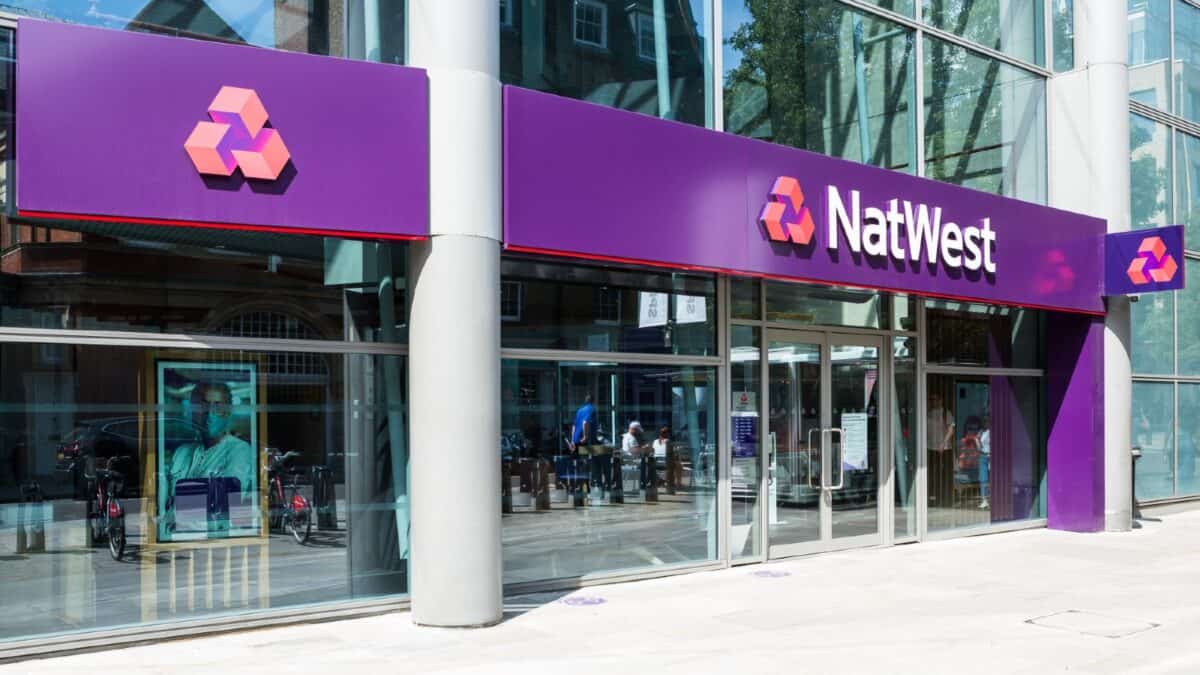
Image source: NatWest Group plc
The NatWest Group (LSE:NWG) share price was 1.7% higher after the first hour of trading today (25 July) following the release of the bank’s results for the six months ended 30 June 2025 (H1 25).
Understandably, upgraded income and returns guidance helped the share price continue its recent stellar run. Since July 2024, it’s up 50%. Over the past five years it’s more than trebled.
What do the results show?
Compared to the same period in 2024, the bank’s total income was 11.9% higher, its net interest margin improved to 2.21% and its return on tangible equity (RoTE) was 1.7 percentage points better. Impressively, its cost-to-income ratio fell from 55.5% to 48.8%.
This translated into a 28% increase in earnings per share.
For the full year, it’s now expecting income greater than £16bn and a RoTE in excess of 16.5%. These figures are the same as the consensus of analysts’ forecasts compiled by the bank before its interim results were announced. This probably explains why the upgrade didn’t lead to an even bigger movement in the share price.
Income investors will probably be pleased with the 58% increase in the interim dividend. Of course, there are never any guarantees when it comes to payouts. However, the business continues to target returning around half of attributable profit to shareholders each year. In addition, it will consider share buybacks as appropriate. Indeed, today it announced a £750m programme to start in the second half of the year.
Still some uncertainty
If I’m honest — when considered alongside yesterday’s earnings release from Lloyds Banking Group – I’m a little surprised how good the results were. These two banks are heavily exposed to the UK with nearly all of their income earned in the country. Yet despite the British economy appearing fragile, they have both done well.
But there are still a couple of things to keep an eye on.
NatWest’s impairment charge (its own internal estimate of potentially bad loans) increased from £38m in H1 2024 to £382m in H1 2025. But quarter on quarter, it was virtually unchanged.
Looking ahead, it’s forecasting a drop in its RoTE. This probably reflects an expectation that the Bank of England will soon resume cutting interest rates. If it does, this is likely to squeeze its margin although it should also ease the threat of bad loans.
On reflection
This is the first set of results for 16 years when the government hasn’t been a shareholder in NatWest. As a result of the intervention during the financial crisis the British taxpayer lost £10.5bn. The alternative would have been a collapse with all sorts of disastrous consequences. Those days are now a distant memory but they’re also a reminder that NatWest can act as a barometer for the health of the wider economy.
In my opinion, the bank’s released another strong set of results. Its balance sheet remains robust and it retains a strong brand with over 19m customers. It has approximately 13% of the domestic mortgage market and operates over 16% of the country’s current accounts.
Bearing in mind the sector-specific risks and, in particular, the bank’s exposure to the UK, I think the stock could be one for long-term investors to consider adding to their portfolios.









